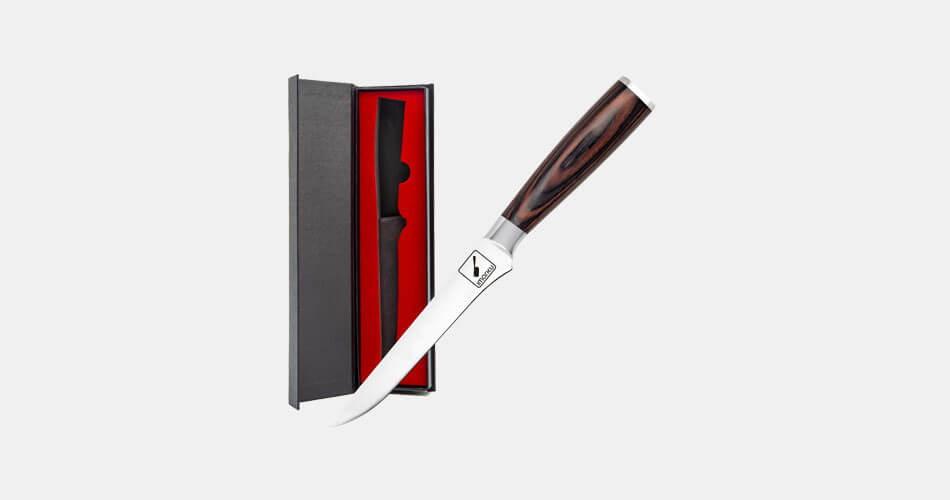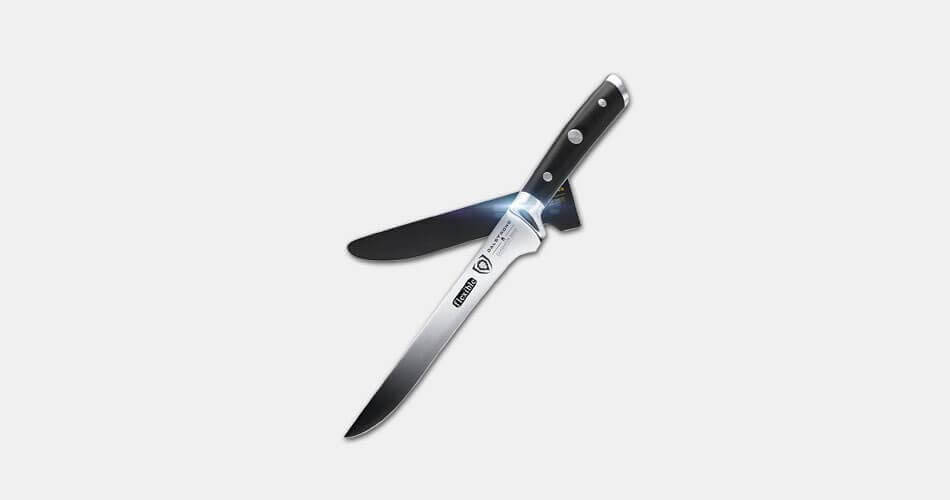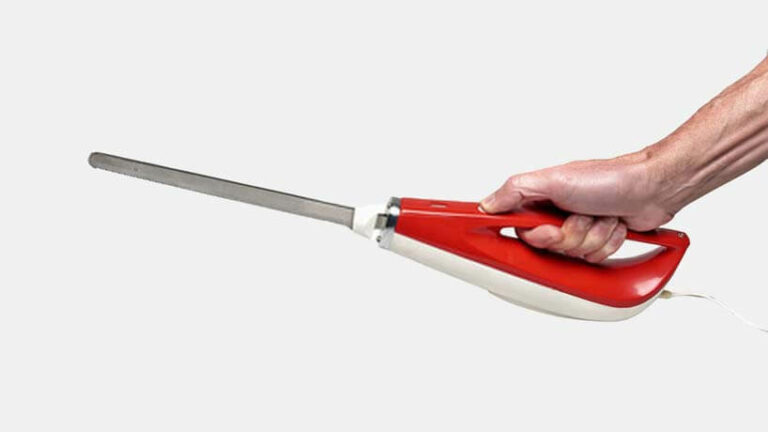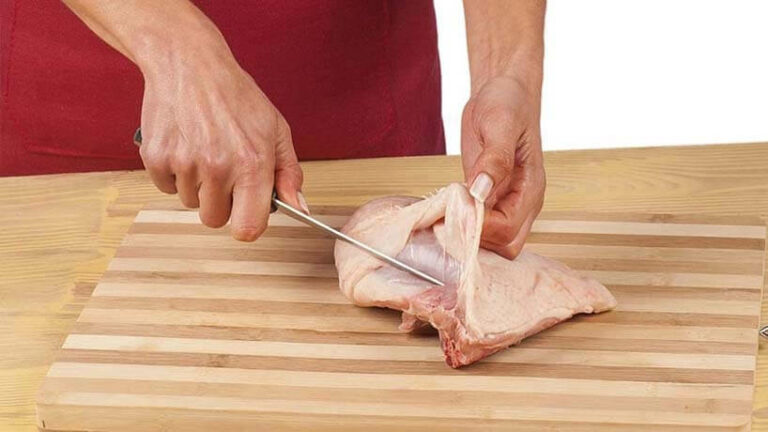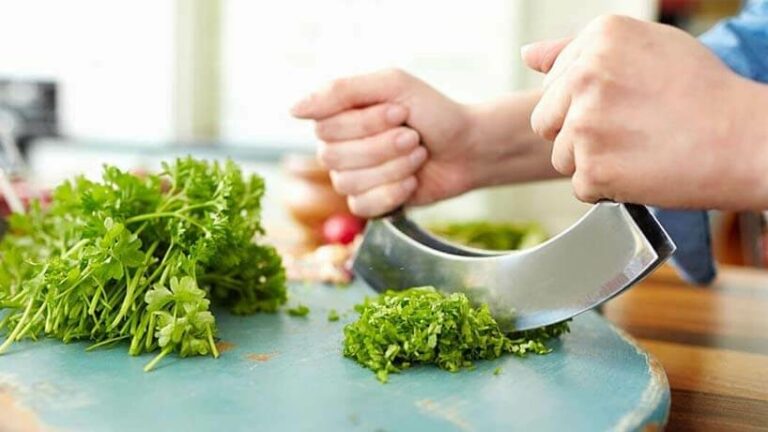When it comes to choosing the best boning knife, there’s a lot that can go wrong. From knives that don’t live up to the claims they make, to blades that’ll break after a couple of months – making the right choice starts from the first step. That’s what our guide is here to do.
We’re going to show you what it takes to make an excellent boning knife that can make close and accurate cuts without letting you down. You’ll get a sense of the kind of value you can expect at different price points. Our goal is to get you ready to make a smart choice and choose a boning knife that suits your needs and your kitchen. Let’s go!
Top 7 Best Boning Knife Reviews in 2023
We don’t want to overwhelm you with loads of knives to choose from. The wealth of choices is already a part of the problem, especially if you’re just starting to get serious and want effective knives in your kitchen. We’ve carefully selected 7 of the best boning knives on the market.
They’ve been chosen from different price points and they suit slightly different need sets. You’ll find out what’s unique about each of the knives and whether they would suit you. We’ll also cover what we did and didn’t like about them – so that you can build realistic expectations of how they’ll perform in the real world. Let’s dive into our best boning knife review!
Victorinox Swiss Army Fibrox Boning Knife
This knife is hands-down one of the most popular and recognizable knife brands in the world. Other than its popularity, Victorinox has been making knives and refining them for nearly a century. The Fibrox handle immediately stands out as one of the attention-grabbers of this knife.
While it might not be the best-looking handle on the market, it’s super-functional. These handles matter because in some states in the US, wooden handles aren’t allowed. While this isn’t the case everywhere, it’s worth considering if you’re running a professional kitchen and hygiene is important to you (it should be).
You’re getting a very sharp pointed tip that helps you to get right up close to the bones. The fine edge of the knife then makes quick work of any meat it touches. With a little flex in the blade and a non-slip ergonomic handle, you can get insanely accurate cuts of delicious meat (meat near the bone is said to be tastier).
You’re getting a functional 6” blade that’s thin enough to reduce drag and improve edge retention, without being weak and easy to damage. Overall, this is likely the best boning knife you’ll get with this level of performance and attention to detail.
- Fantastically sharp tip and cutting edge
- Enough flexibility in the blade for extremely accurate cutting
- Ergonomic, legal, and non-slip handle
- The finger guard is very safe
- This thin blade isn’t as robust as some other 6” boning knives
- Not sharp out the box
Mercer Culinary Genesis Boning Knife
Here’s another fantastic value for money knife for the enthusiast or inspired beginner. You’re getting decent Santoprene to handle that’s non-slip and easy to use. It helps to balance the thinner blade and give you an excellent pinch grip. The steel’s high-carbon content gives it top-class resistance against rusting and corrosion while keeping the blade looking new and fresh for far longer.
We love the hefty (but still lightweight) feel of full-tang knives. It’s hard to beat the durability and balance of these knives, and the control you get over your cutting. The edges are taper-ground and this lets the knife reach an impeccable level of sharpness and hold it for longer. You’ll be able to cut very accurately and smoothly with this knife. They’re easy to clean and sharpen and show you when they’re getting dirty.
This might seem like a negative point, but in a serious kitchen, it’s better to know when your knives are dirty than to have ones that look quite clean when they’re not. You should only hand wash this knife and take good care of its surface. Although it claims to be dishwasher friendly, we never advise washing any premium knives in a dishwasher.
There is a full-bolster and a finger guard that encourages the right grip position at the balance point of the knife. This is a handy safety feature and acts as final protection against accidental slips. Overall, you’re getting a fantastic value for money knife and possibly the best boning knife for the money.
- A safe and secure knife that’s beginner-friendly
- Resistant to staining, rusting, and corrosion
- Easy to sharpen with good edge retention
- Doesn’t come very sharp out the box
- A little tedious to keep clean
Imarku Fillet and Boning Knife
With the same high-carbon content steel, you’re getting all the resistance and durability you’d need from an entry-mid range boning knife. While it’s not necessarily a high-end knife, you’re getting some top-end features like excellent sharpness and edge retention.
This isn’t a knife you’re going to need to touch up too often and it’s going to cut through meat like it’s a cloud. At HRC56, the blade isn’t brittle and can take its fair share of damage without showing the signs. This blade is a little thicker and quite a lot less flexible than the two knives we’ve already looked at in this review.
This strength carries through to bring your one of the most durable and robust boning knife blades for the money. You’re getting an exceptionally well-designed and polished Pakkawood handle which feels fantastic in your hands. It’s not as heavy as some other handles, so it helps to better balance the knife.
We loved that it’s non-slip despite its smooth appearance and is exceptionally easy to clean and maintain. There’s a high-quality metal cap to protect the top of the handle, and a full bolster leading into the blade. You’re getting an incredibly sharp and sturdy cutting edge and a top best boning knife for a balance between durability and workability.
- Sleek and attractive handle
- Incredible edge retention, sharpness, and robustness
- Strong tip with powerful piercing accuracy
- Full-bolster with a comfortable finger guard
- Blade loses some functionality by not being very flexible
- Wooden handles are less hygienic in a professional setting
Paudin Super Sharp Boning Knife
Here’s a versatile boning knife that’s quite a multi-functional workhorse. You can work kitchen tasks from de-boning and filleting, to trimming and butterflying. It’s extremely accurate and can handle intricate cutting work without much trouble.
Using premium-quality German stainless steel, you’ll have resistance to rusting and corrosion, as well as decent protection against wearing and scuffing the blade. Despite its affordable price, this is a knife that’ll last for years if you treat it right. It’s also one of the most visually stunning knives in this price range.
You’ll love the wavy combination of the patterned blade and the wood grain finish of the Pakkawood handle. They look incredible with will immediately catch your attention. One of our favorite features of this knife is the pronounced bolster and finger guard. It’s astonishingly safe and gives you one of the most comfortable sitting positions for your fingers in a pinch grip.
You’ll have impeccable control over the tip and the edge for intricate and delicate kitchen work. This, combined with the ergonomic handle makes the knife feel way more expensive than it is. Overall, you’re getting one of the most user-friendly options and a top-quality boning knife you’ll keep around for years.
- Fantastic looking knife with a gorgeous blade
- Ergonomic handle and finger guard design
- Versatile use in the kitchen
- Comes with a high-quality hard case
- Doesn’t come very sharp out the box
- Not too easy to sharpen
Shun Cutlery Classic Boning Knife
Our final knife is a traditional Japanese-style curved boning knife. The narrow blade gives you frictionless cutting and can cut thin slices without meat sticking to the blade. We loved the Damascus style finish on the blade. It has a classy and sleek appearance worthy of any professional kitchen.
This is not your average beginner’s knife and will take a decent set of skilled hands to get the most from this Shun knife. The tip is incredibly strong and durable, despite being quite thin and at the end of a curve. This is a result of excellent craftsmanship and a refined steel-working technique. It’s extremely sharp and capable of handling the most demanding professional use.
You’ll get insanely precise and accurate cuts with the 6” blade, made even easier by the ergonomic D-shaped handle. It’s crafted from beautiful Ebony Pakkawood and treated to stay resistant to bacteria and to be non-slip. This isn’t an inexpensive boning knife – but you’ll get what you pay for, and much more.
- Premium design with expert Japanese craftsmanship
- Strong and excellently sharp tip and cutting edge
- Sleek, attractive, and gorgeous Damascus finish
- Easy to maintain and clean
- Expensive compared to the other knives in this review (but worth it)
- Not beginner-friendly
Dalstrong Crusader Series Boning Knife
If your biggest pet peeve is half-tang knives or poorly made handles, then this boning knife is something you’re absolutely going to love. It’s a one-piece, full tang knife with a remarkably modern handle. In terms of ingenuity, I’m tempted to name it the best boning knife on this list.
Not only is this all-steel construction extremely well balanced, but it is also hygienic as there aren’t any nooks or rivets where bacteria could lurk. The design itself is minimalistic, offering you an ergonomic handle that’ll help you make cuts for a long time. From hardness to ThyssenKrupp German steel strength, blade angle and hand sharpened edge, this boning knife is indeed an absolute steal at this price range.
The magnetic wood sheath only adds to its charm. Now, while all that sounds really great, I can’t recommend this knife without looking at some of the reviews first. The customers mostly seem super-satisfied with the boning knife and also the other knives of the Crusader series, however, they do seem to have some issue with sharpness.
- One-piece, full tang build
- German steel blade
- Ergonomic, rust-resistant handle
- Comes with a magnetic wood sheath
- Well balanced knife
- Doesn’t come too sharp out of the box
Dalstrong Gladiator Series Boning Knife
Here’s a great knife that’ll give you a taste of what true premium and class-leading knives can offer you. It combines some of the latest cutting-edge manufacturing and forging technology with sleek and stunning looks – bringing you a fantastic mid-high end boning knife.
It’s got a full-tang design and uses high-carbon steel to give you a knife that’s robust, resistant, and durable. There isn’t much that’ll leave a stain on this steel. You’ll love the razor-sharp edge and excellent retention – though be very careful with this knife. If there is one complaint, it’s that the edge might be too sharp.
It’s not a beginner-friendly knife and it rewards a skilled user more handsomely. The handle feels sturdy and well-balanced while giving you slip resistance and comfortable and accurate control over versatile cutting work. You’ll find the finger guard to be quite large – but necessary – to give you room to maneuver your fingers and vary your pinch grip.
It’s a great knife to hone your skills with and develop techniques you’ll need as a budding professional. You’ll get a protective sheath for the blade that does an excellent job at protecting the fine cutting edge from getting scuffed up. Overall, this might be the best boning knife if you’re on a bit of a budget and can’t go to the higher-end knives yet.
- Sleek, attractive, and well-designed profile
- The protective sheath is incredibly effective and well-fitted
- The ultra-sharp edge holds well
- Easy to clean and maintain
- Quite a bit more expensive than some of the knives we’ve already looked at
- Quite a heavy knife with a bulky handle
Some Things You Should Know Before Buying
Here are a couple of quick thoughts we’d like to discuss before you make your decision. It’s important to get the best value for money possible and we want to you make the most informed choice possible.
What to Look for in a Boning Knife?
Some features are more important than others in a boning knife. How you rate these features depend on your experience and skill set. Here’s what you should look for in boning knives. You want a strong tip that can pierce the meat and get the cutting edge as close to the bone as possible.
The knife’s edge needs to be extremely sharp and the blade should be thin. This reduces drag while cutting and gives you more control and accuracy over your results. Getting a knife with resistance to corrosion and rusting is important, but not essential if you’re experienced and know how to care for and maintain your knives.
You want an ergonomic handle (we prefer D-shaped handles) with slip resistance and a finger guard to help you get the right grip safely. The handle should be heat, cold, moisture, and bacteria-resistant if possible. We prefer blades with some flexibility and find they perform better when you need to cut accurately and quickly.
How to Use a Boning Knife?
Use the tip of the knife to pierce the meat along where it meets the bone. Insert the knife as deep into the meat as you need to. Glide the cutting edge through the meat as close to the bone as you can (without cutting at the bone).
If you have to use a sawing or rocking motion, it’s likely your blade isn’t sharp enough and needs to be touched up. Spend some time learning about the different grips for boning knives and when to use them. You can refine your technique with a little practice and experience.
Frequently Asked Questions (FAQs)
Q: Should a Boning Knife Be Flexible?
A: Boning knives are usually more flexible than chef knives or cleaver Knives. This is so that the knife can bend and twist to get the meat off the bones properly. However, when you’re dealing with thicker meat like pork or beef, you should get a stiffer knife, otherwise, you wouldn’t be able to exert enough force.
Q: How Long Should a Boning Knife Be?
A: Usually, a knife ranging from 12 cm to 17 cm in length is ideal for boning purposes. However, you might find some boning knives that extend well over 24 inches. It should also be quite a bit narrower than a standard kitchen knife.
Q: What Is the Difference Between a Fillet Knife and a Boning Knife?
A: While a fillet knife and a boning knife may look somewhat identical, they differ in terms of purpose. Fillet knife is more commonly used in the case of fish, and boning knives tend to be used for meat. They could technically be used interchangeably with each other. In comparison, fillet knives tend to be thinner and more flexible.
Final Thoughts
You should have a very clear idea of what you’re looking for in a boning knife. As you make your choice, feel free to go over any of the knives that interested you to see if they’ll give you what you’re looking for. Getting the best boning knife for your needs will take the quality of your cuts to the next level and give you some incredibly delicious cuts of meat!




